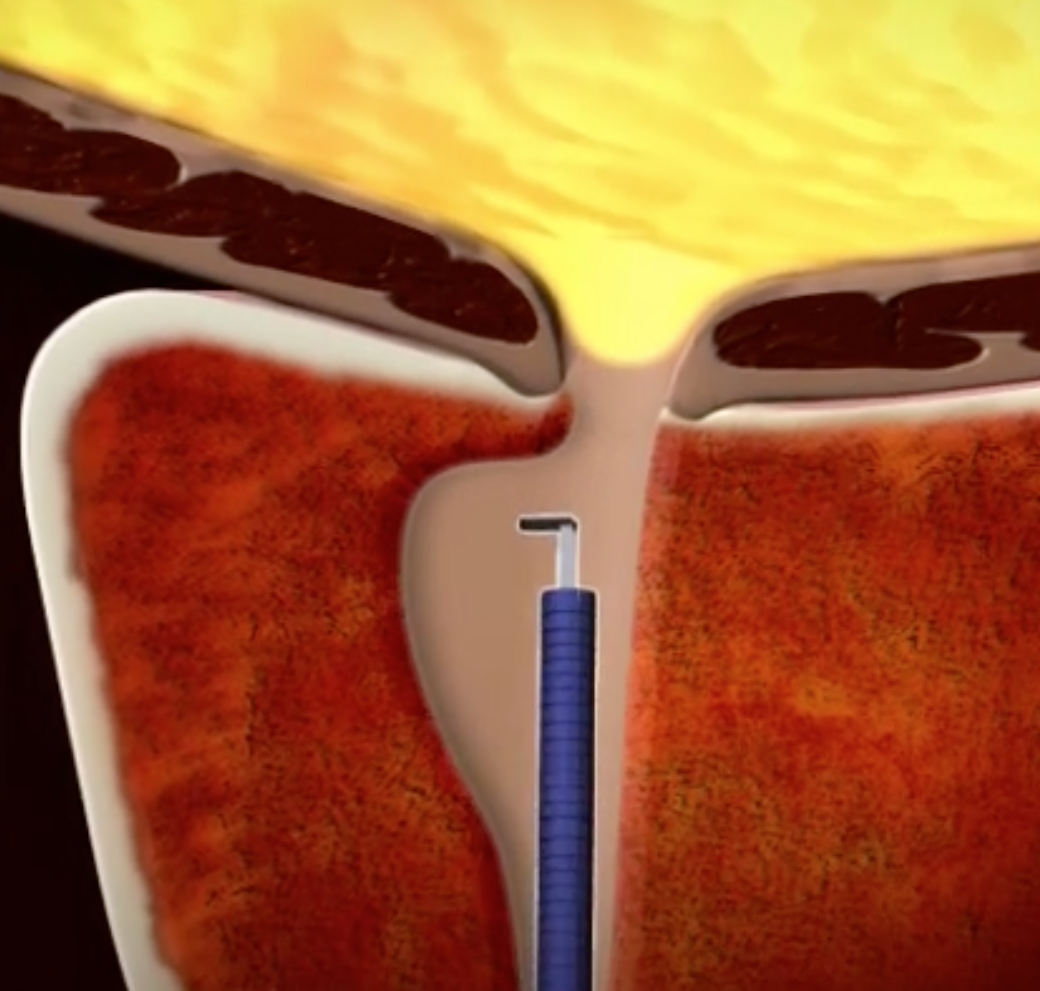 Scientific Editor: Editorial Board ISUD website
Scientific Editor: Editorial Board ISUD website
What is TURP (Transurethral Resection of the Prostate)?
TURP is the surgical procedure to remove part of the prostate gland through the urethra.
When is TURP performed?
This procedure is indicated to treat symptoms caused by BPH (Benign Prostate Hyperplasia). It is a therapeutic option for patients who:
- do not respond to pharmacotherapy
- have experienced urinary retention (inability to urinate) more than once
- suffer from urinary overflow incontinence (i.e. incontinence due to bladder overfilling)
- suffer from recurrent urinary tract infections
- are predisposed to bladder stone or diverticula
- present hematuria (blood in urine), due to prostate size, that cannot be treated with pharmacotherapy
- present distention of the kidneys due to high residual amount of urine, that may potentially affect renal function
TURP is also indicated when prostate volume is less than 80ml.
What sort of preparation is required?
Upon hospital admission, preoperative preparation includes blood tests, chest X-ray and ECG (electrocardiogram). In case you are on anticoagulants, it may be required to interrupt your anticoagulant therapy a few days before the operation. You should always consult your Cardiologist, for there may be need to replace anticoagulants with injections in the abdominal region.
How is TURP performed?
The procedure is performed with either general or spinal anesthesia. Initially, the patient is placed in a gynecological examination position, the genital region is sterilized and the urethra lubricated. A mini camera is inserted through the urethra to locate the prostate. With the use of an instrument that is attached to the camera, a large part of the prostate is removed. This instrument applies heat to remove the lesions. Then the resected area is cauterized to prevent bleeding. At the end of the procedure, a catheter is placed for continuous normal saline irrigations.
The length of hospital stay depends on the extension of the lesion, and is estimated to 4 days on average. The catheter is usually removed on postoperative day 3.
What about after TURP?
During the first postoperative days, there may be blood in the urine (hematuria). If so, the catheter will be kept longer and continuous irrigations will be further applied.
Once the catheter is removed, urinary function has to be monitored and an ultrasound scanning will be made to check whether there is residual urine after voiding.
Upon discharge from hospital, you will given specific written instructions about:
- what antibiotic regimen to take
- how and when to get the histological result
- for how long to abstain from physical exercise and strain
- how important it is to drink plenty of fluids
You should consult your Cardiologist about when to restart your anticoagulant therapy.
What is the effect of TURP on patient’s quality of life?
Most patients face no problem after the surgery. More than 50% of patients will have no ejaculation during orgasm. This is called retrograde ejaculation, that is semen is redirected back to the bladder and eliminated through urine instead of going out through the urethra during ejaculation. As for nutrition after the operation, you should drink more than 1.500ml fluids/day and avoid smoking, consuming coffee and alcohol, for these may cause irritative symptoms.
What is B-TURP (Bipolar TURP)?
b-TURP is the classical TURP with use of bipolar diathermy. It is a new method which is equally effective as the classical TURP in reducing symptoms of Benign Prostate Hyperplasia (BPH). The advantages of B-TURP include lower risk of bleeding and clot retention and, therefore, less need for blood transfusions.
It has also been observed that, when b-TURP is applied, the catheter is removed more quickly and hospital stay is shorter. However, given that bipolar-TURP is based on a new technology, there is need for further research to provide significant evidence supporting the above mentioned advantages.


